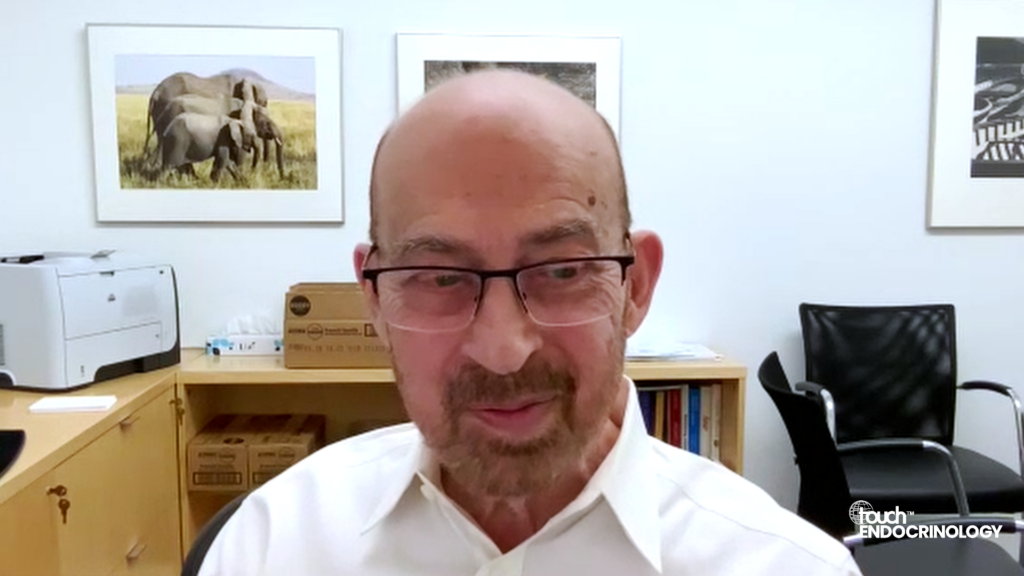As many as one in five people with cancer have concomitant diabetes, and this number may increase as survival rates for cancer continue to improve.1,2 Patients with cancer and type 2 diabetes are at elevated risk of all-cause mortality, myocardial infarction and poor diabetic outcomes.1 Impaired diabetes control and worsened outcomes may reflect a change in treatment focus for a patient, with a shift towards treating the cancer and lower emphasis placed on glycaemic control.3 Ideally, awareness of glycaemic status and adequate glycaemic control would continue throughout a patient’s cancer treatments, and through to end of life, if appropriate.3
Management of diabetes is complicated not only by the shift in focus towards treating the cancer, but by the interaction between medication used in each disease and the effects of changes in diet and nutrition, especially in cases where a feeding tube is required.2
At the recent American Association of Diabetes Educators (AADE 2019) meeting, practice providers shared best practice in supporting patients with diabetes and concomitant cancer.
Evaluating glycaemic control is complicated by several considerations. Measuring glycated haemoglobin (HbA1c) is best suited to people with a normal haematological profile and may be misreported in patients with anaemia or with elevated or decreased cell turnover. People who have received packed red blood cell transfusions, which are common in patients with leukaemia, are also not suited to HbA1c assessment. Fructosamine measurements may be more appropriate because they are unaffected by red blood cell counts, but they are unreliable in patients with varied thyroid activity or impaired liver function.4 Finger-stick glucose monitoring is recommended in most cases; however, it is unknown if chemotherapy has any effect on readings gathered with this technique.5
Patients undergoing magnetic resonance imaging (MRI), computerised tomography (CT) and X-ray evaluations must remove all pumps and devices that may be part of their diabetes management. In addition, patients being assessed by positron emission tomography (PET) scans must modify their diabetes treatments; no long-acting insulin for 6 hours before testing and no short-acting insulin for 4 hours before testing, with a target blood glucose level of under 200 mg/dl prior to the scan.5
Chemotherapy presents a challenge in patients with diabetes. Patients with a history of long-standing or poorly controlled diabetes may present for cancer treatment with pre-existing renal, cardiac, or neuropathic complications, and these complications may be exacerbated by chemotherapy agents. Some chemotherapeutic agents, for example phosphoinositide 3-kinase (P13K) or mammalian target of rapamycin (mTOR) inhibitors are associated with new-onset diabetes or up to 50% increased incidence of hypoglycaemia.5 It is important that all aspects of chemotherapy are discussed with the multidisciplinary team when considering initiating treatment options in patients with diabetes.
Steroids, commonly co-prescribed with cancer treatments, also require medication adjustment in patients with diabetes.5,6 Glucocorticoid treatment often results in hyperglycaemia, which requires compensation with insulin initiation or adjustment. It is recommended that in patients with a blood glucose measurement under 200 mg/dL, non-insulin anti-diabetes therapy may be used, with the addition of insulin if hyperglycaemia is observed. In patients with no fasting hyperglycaemia, prandial insulin can be used at 0.1 unit/kg per meal. For those with fasting hyperglycaemia, basal insulin at 0.1–0.3 units/kg/day can be initiated. Patients on low-dose steroids (<40 mg dexamethasone daily or equivalent) may be suited to an insulin strategy of 40% basal and 60% bolus; those on high-dose steroids (≥40 mg dexamethasone daily or equivalent) may benefit from a shift to 25% basal and 75% bolus.6
Matching insulin requirements to patients on a feeding tube is best achieved by:6
- Calculating grams of carbohydrate per feeding
- Multiply rate of transfer by hours of feeding to get total mL
- Multiply mL by the carbohydrate content per 1 L
- Allocate one unit of insulin per 6–8 g of carbohydrate
- If a patient previously needed basal insulin, increase units to allow for this
- If the patient takes additional food, consider adding extra prandial insulin
When transitioning a patient off an insulin drip, it is important to determine the average hourly insulin rate over the previous 8 hours and multiply this rate by 24 to get the total daily dose. Seventy percent of the total dose should then be converted from intravenous insulin to subcutaneous insulin, half of which should be basal, and the remainder given as bolus. The insulin should then be divided to cover the number of meals eaten by the patient.6
Concomitant diabetes and cancer complicates the medical management of both conditions, and places the patient at risk of poor outcomes, uncontrolled hyperglycaemia and avoidable hypoglycaemia. An individualised approach that is tailored to the patient and involves all appropriate care teams, is essential in optimising treatment.
References
- Arreskov AB, Olsen MA, Pouplier SS, et al. The impact of cancer on diabetes outcomes. BMC Endocr Disord. 2019;19:60.
- Psarakis HM. Clinical challenges in caring for patients with diabetes and cancer. Diabetes Spectr. 2006;19:157–162.
- Hershey DS. Importance of glycemic control in cancer patients with diabetes: treatment through end of life. Asia Pac J Oncol Nurs. 2017;4:313–8.
- Wright LA and Hirsch IB. Metrics beyond hemoglobin A1C in diabetes management: time in range, hypoglycemia, and other parameters. Diabetes Technol Ther. 2017;19:S16–S26.
- Wilson M. Management of diabetes in patients with cancer: Part 1. American Association of Diabetes Educators (AADE), Houston, Texas, USA; 09–12 August 2019. Presentation S12a.
- Levesque C. Management of diabetes in patients with cancer: Part 2. American Association of Diabetes Educators (AADE), Houston, Texas, USA; 09–12 August 2019. Presentation S12b.













